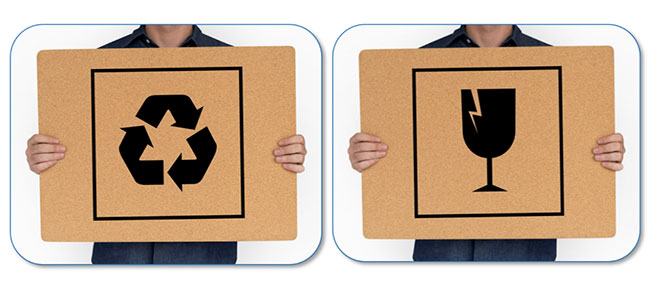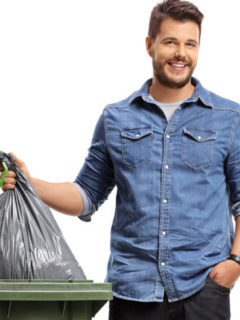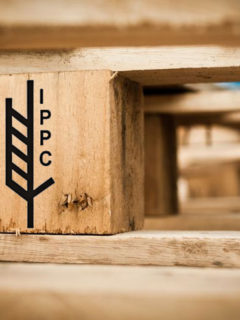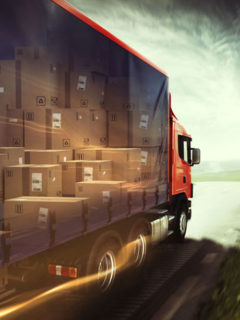more to a package than you think…. And for those of you who still have doubts about this, you should read on.Looking for a smart marketing tool or to have more efficient logistics? Take a look here to see how good packaging can help you.
- [1] Protect your products.
- [2] Facilitate the transport and storage of goods.
- [3] Make your brand visible and boost customer satisfaction.
- [4] Communicate information about the packaging and its contents.
Packaging: every jar has a lid
Below we look at the 4 basic functions of a package. We start with the primary functions. These include the technical features of a package such as protection (1) and transport (2). Then it is the turn of the secondary functions. These relate to aspects such as marketing (3) and communication (4).
► 1. Protection
[The primary and probably most important function of packaging is
to
protect a product. This is also known as the “barrier function”. Good packaging protects your goods during storage, transport and shipment to the end customer. This protection can take place on three levels
-
Against natural hazards: water, gas, smoke, bacteria, heat, cold, pests, etc.
-
Against physical factors: shocks, vibrations or internal separation between your products.
-
Against your product itself: the product you are transporting may itself present a risk, such as a chemical product. Strong packaging (such as UN boxes) is essential to protect yourself and your environment.
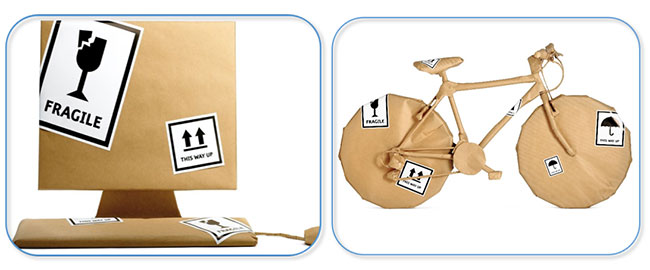
► 2. Storage and transport
This second example of a primary function brings us to the transport and storage of goods.Good packaging is essential for optimal storage.By using a crate, for example, you can stack your products securely on top of each other, with no possible loss of space between them.
By packaging your products, you can also move them much more efficiently.There’s nothing easier than stacking your packages on a pallet and transporting them with a pallet truck in one go, is there?
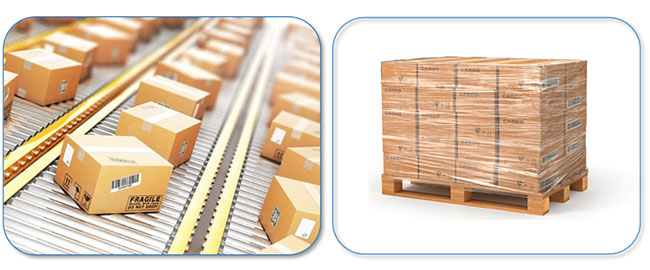
► 3. Visualising your brand
Comme nous l’avons mentionné dans l’introduction, l’emballage a une grande valeur commerciale. Mettons-nous, par exemple, à la place des boutiques en ligne. Pour de nombreux e-shops, l’emballage est souvent le premier (et unique) point de contact physique avec le client. Raison de plus pour personnaliser un emballage et apporter ainsi un message unique à votre client. Ajoutez, par exemple, un remerciement à l’intérieur de votre caisse. De cette façon, vous pouvez vous distinguer encore un peu plus de la concurrence.
Il ne faut pas sous-estimer le nombre de personnes qui ont tenu votre caisse dans leurs mains : des magasiniers et coursiers aux voisins. L’emballage est donc un excellent support pour mettre votre marque en avant. Considérez un emballage personnalisé comme un vendeur passif grâce à qui vous pourrez accroître la notoriété de votre marque. Vous n’avez donc rien à faire de plus !
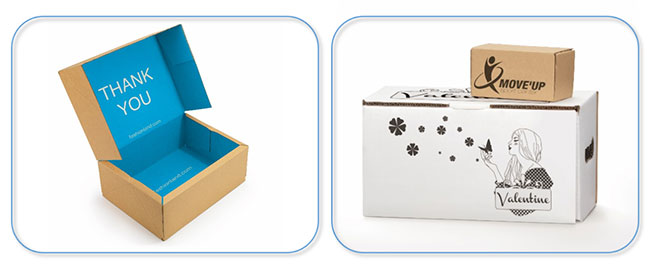
► 4. Information support
Enfin, un emballage peut vous en dire long sur le produit que vous y mettez. Par exemple, le produit dans la caisse est-il sensible à la température ou très fragile ? Comment devriez-vous, en tant que destinataire, faire face à cette situation ? En utilisant les étiquettes d’avertissement, par exemple, votre client saura exactement ce qu’il faut faire.
Sur la caisse, vous trouverez également des informations sur l’emballage lui-même. Par exemple, comment ouvrir la caisse ou comment la recycler ? Toutes ces questions sont résolues en un instant grâce à un symbole imprimé sur l’emballage.
